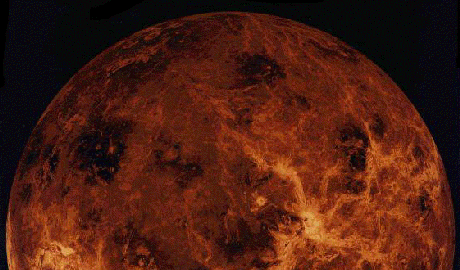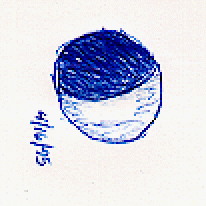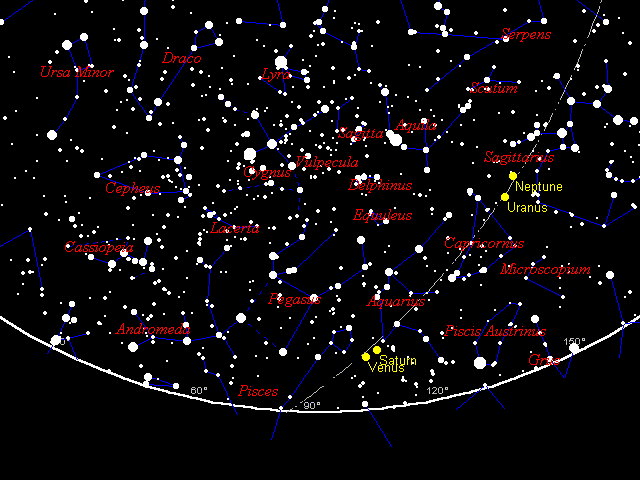

Venus provided that proof, at least in the eyes of Galileo. After observing the planet several times, Galileo began to notice slight changes in illumination. He soon realized that Venus, like the moon, was changing phases. Venus experienced peroids equivalent to a full moon, new moon, and all the stages in between.
For Galileo, this was proof that the earth must revolve, along with the other planets, around the sun. Skeptics claimed that it was still possible to maintain a geocentric point of view. This is accomplished by having Venus orbit the sun, while the sun orbits the earth. Although this seems absurd today, followers of the church and Aristotle found this to be a sufficient explanation.
Several restrictions had to be dealt with in order to observe Venus in the Spring of 1995. The weather was very bad for large portions of the viewing window. The viewing window was very short, and at a bad time to begin with. The one sketch I was able to obtain does show the importance of Galileo's observations. It is approximately a half crescent, beautifully illustrating the phase changes Galileo noticed.

This is a partial skymap for an observer in Houston, TX:















 We appreciate any comments or suggestions.
We appreciate any comments or suggestions.